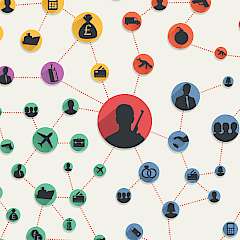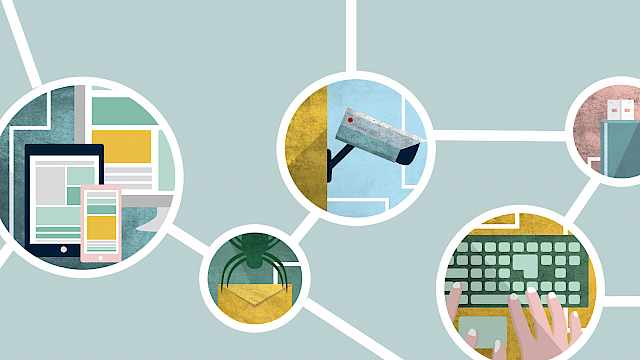Over the past decade, epidemic processes on networks have become a hot topic in physics and mathematics.
Researchers have gained surprising insights into biological epidemics and also a diversity of related phenomena, ranging from the spread of radical opinions to cascading failures in power grids.
In an ever more connected society, these insights are starting to make an impact.
One of the fundamental insights from physics is that very different systems sometimes follow the same mathematical equations. This is also true for simple epidemic models, which are studied increasingly because of their relevance for biological epidemics but also because they shed light on a wide range of other phenomena where ‘things spread’: computer viruses, forest fires, invasive species, and even to some extent corruption and criminal behaviour.
Avenues of transmission
To persist and propagate, epidemics need avenues of transmission. The more of these avenues that exist the higher the chance an epidemic will emerge, the quicker it will spread, and the bigger it will become. For instance, when humans first started to build cities they were afflicted by numerous outbreaks of previously unknown diseases that took advantage of the denser human proximity, and hence avenues for transmission, that city life afforded.
Superspreaders
Although the number of contacts through which a disease can be transmitted is the single most important determinant for outbreaks, the distribution of these contacts in the population takes a close second place.
In many relevant networks, such as social contact networks and sexual contact networks, some individuals have a very large number of contacts. These ‘hub’ individuals are for instance bus drivers, who, in a normal working day, have interactions with hundreds of different passengers.
These high number of contacts with hubs come to bite us twice: Hubs are proportionally more likely to contract an epidemic disease, and once infected they are more likely to spread it. Due to this quadratic effect, hub individuals become so-called superspreaders of epidemics.
Attacking networks
From the perspective of flu, washing your hands is an attack that removes links across which it can spread, and getting vaccinated is an attack that removes a network node.
The maths of stopping epidemics is the same that we use when we want to attack (or protect) other networks.
The natural target for vaccination ‘attacks’ on a network is the superspreaders. At least in some models, vaccinating the top one per cent most-connected individuals has a greater impact on the disease than vaccinating the bottom 90%. This insight can be readily transferred to other applications, such as cybersecurity.
In a company, the employees that regularly send out a large number of emails and documents to multiple recipients are potential superspreaders of certain worms and viruses. So, it is sensible to make sure these employees particularly have received training that enables them to recognise these threats.
Fighting fire with fire
In the networks that are relevant to biological epidemics, we do not know with certainty who potential superspreaders are.
Privacy concerns and the scale of the required effort prevent us from creating detailed maps of contact networks. However, if an epidemic can find highly connected individuals by spreading over the links, so can vaccination campaigns.
One suggestion is to have a campaign where recipients of vaccination can nominate friends to be offered a free vaccination. In this way, the vaccination campaign itself starts to behave like an epidemic, and thus preferentially affects the network hubs.
While similar ideas are now regularly used in viral marketing, their application to epidemics comes with a big caveat: Campaigns will only work for diseases where the contact network relevant for disease transmissions is closely aligned with the contact network for vaccinations. Our bus driver from the previous example is a likely hub in the epidemic network, but not necessarily in the nomination network.
The future
In the future the size and density of the human population will likely continue to increase, also the rise in long-distance travel will continue leading to ever more tightly knit global contact networks across which epidemics can spread. Aggravating this situation is the misuse of antibiotics which has eroded our main line of defence against epidemics.
Finally, history has shown that new epidemics often emerge in response to environmental changes that bring us into contact with new pathogens. In the face of increasing connectivity and accelerating environmental change, the emergence of new major epidemics in the near future is foreseeable.
While the battle against future epidemics will mainly be fought by biologists rather than mathematicians, research in networks can help us to predict outbreaks better and may increase the efficiency of vaccination campaigns, saving money and lives. At present, the biggest unknowns in this field concerns human behaviour.
What is the structure of human social networks, how do they form and change in time, and how do they respond to major events such as epidemics? Present and future progress on these questions will improve our abilities to combat epidemics, and also aid us in many other security-relevant contexts.
Copyright Information
As part of CREST’s commitment to open access research, this text is available under a Creative Commons BY-NC-SA 4.0 licence. Please refer to our Copyright page for full details.







